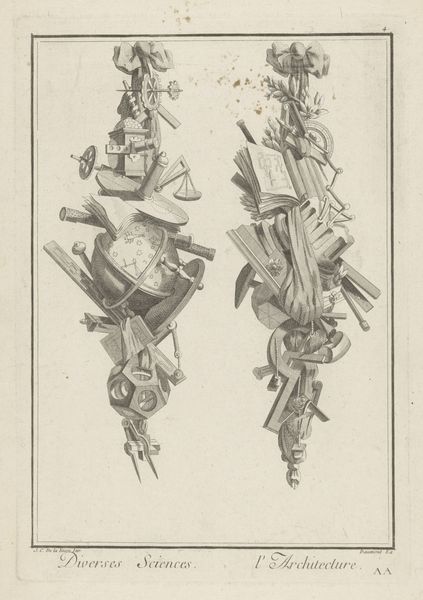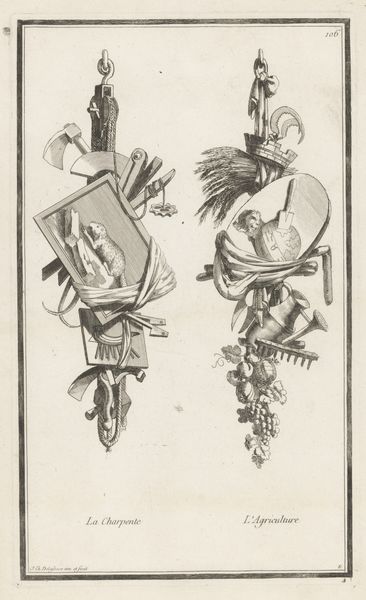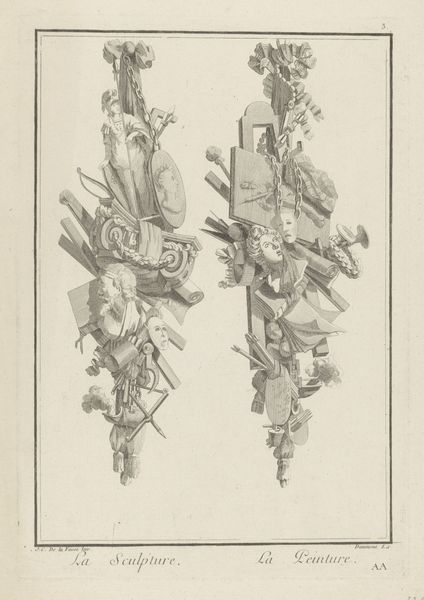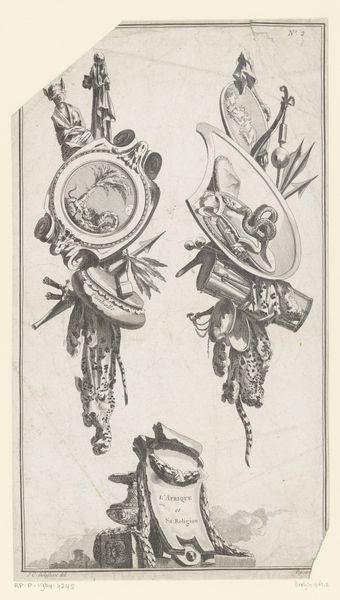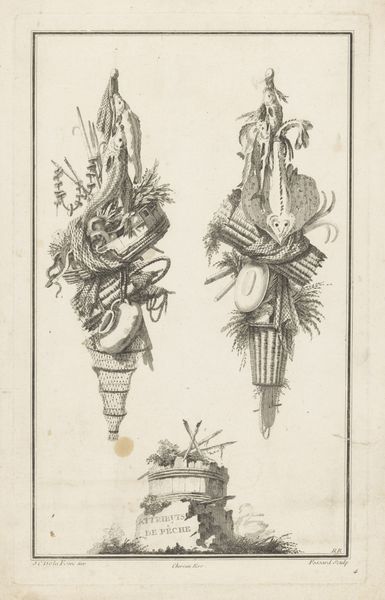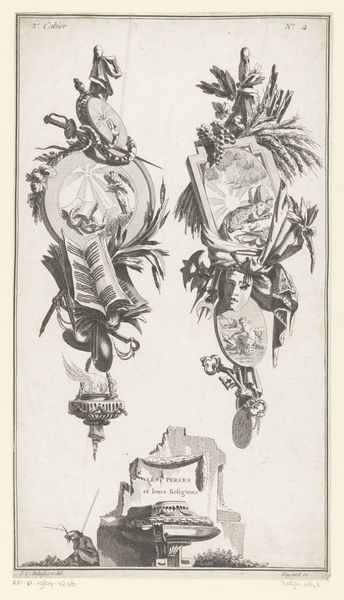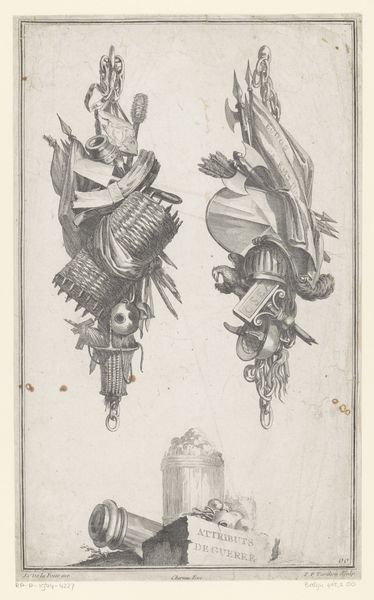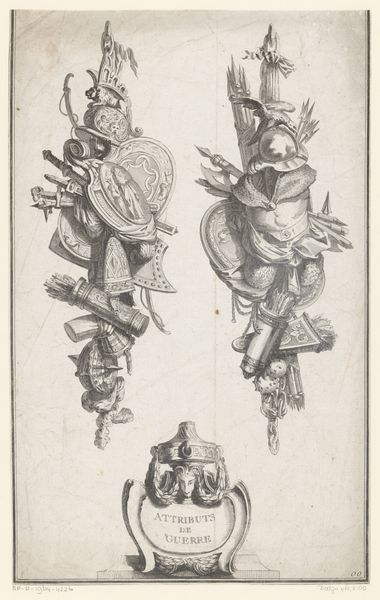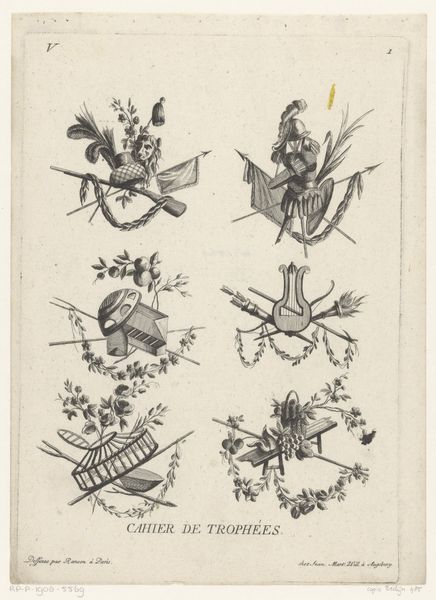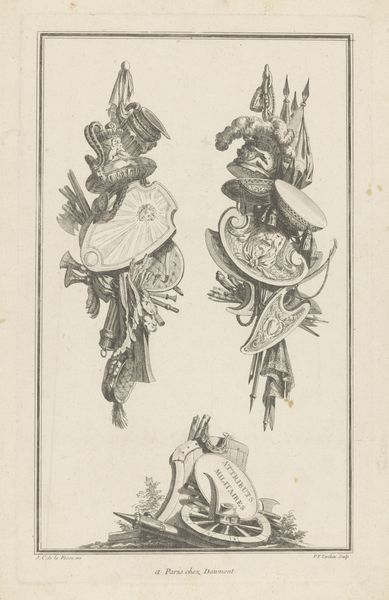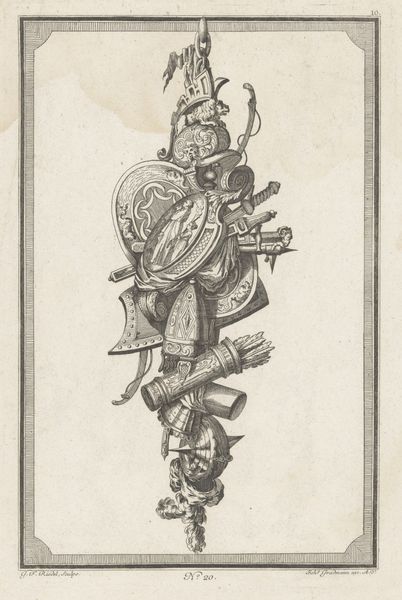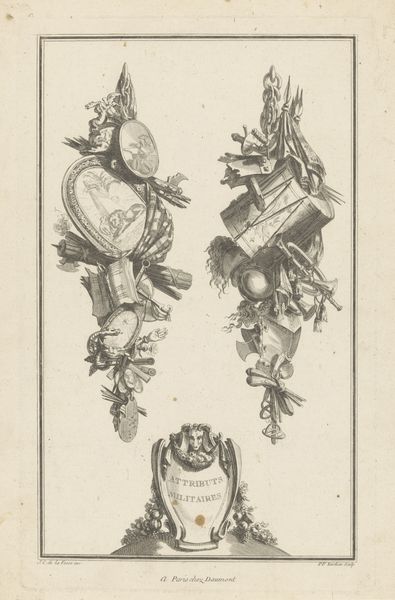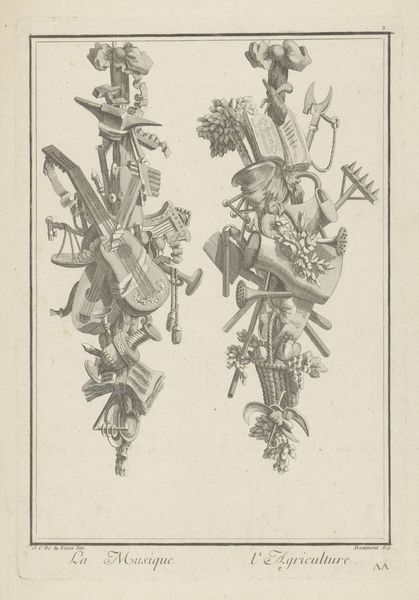
Dimensions: height 379 mm, width 234 mm
Copyright: Rijks Museum: Open Domain
Editor: This is "Trophies with Fish Trap and Baskets," an engraving by Etienne Fessard from 1771. The density of the objects creates a somewhat overwhelming feeling; a sense of abundance, almost to the point of excess. How do you interpret this work, especially given its historical context? Curator: The “Attributes of Fishing” offers insight into 18th-century visual culture. These carefully arranged fishing tools aren’t just decorative. Consider the ecological impact of fishing then; this abundance reflects a world view where natural resources were seen as limitless. What stories does this image omit? Editor: Omissions? I hadn’t thought of it that way. Curator: Exactly! Who benefits from this "limitless" resource? The print celebrates a specific form of leisure and commerce, likely for a particular social class. How do the realities of labour, access, and the potential for over-exploitation fit into this idealized image? Editor: So, it's a visual representation of a privileged perspective. It also presents an idea of nature that disregards the labor and environmental consequences. Curator: Precisely! And what of the communities who may have relied on fishing for sustenance rather than sport or profit? By focusing on abundance as a “trophy,” the print obscures other crucial narratives. Editor: It definitely provides a new lens for looking at historical artwork. I see now how understanding the social context adds layers of complexity. Curator: Indeed. By interrogating what is shown and, more importantly, what is omitted, we gain a much richer understanding of the artwork and the society that produced it.
Comments
No comments
Be the first to comment and join the conversation on the ultimate creative platform.
